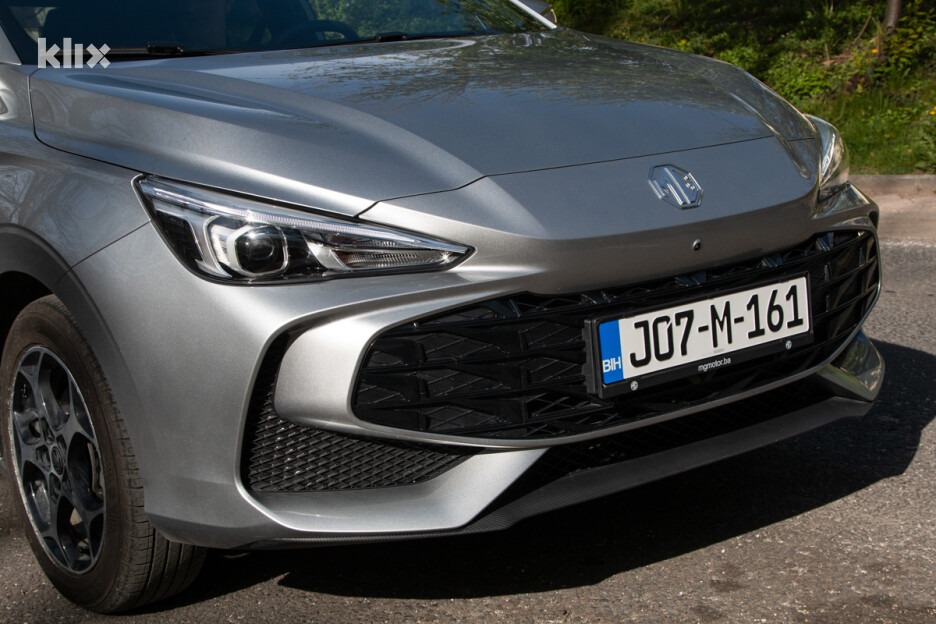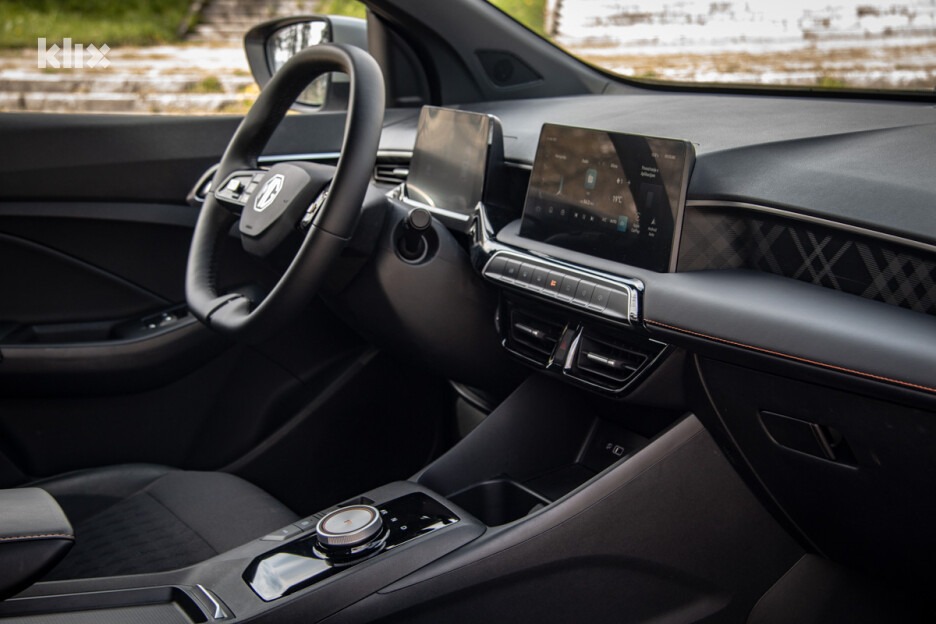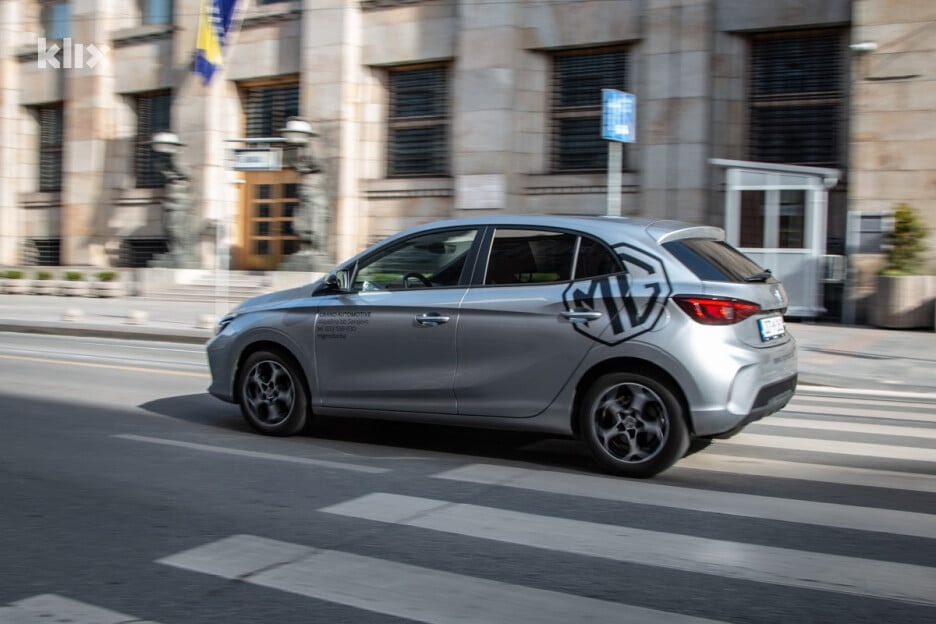One of only three “full” hybrid cars from the (sub)urban B segment comes from the Chinese car company MG (which used to be one of the pride of the British car industry) and brings with it a drive solution that makes small diesel engines no longer make sense.
Everything has already been said and written, so this time we will not deal with the reasons why the old car company MG (Morris Garage) is no longer one of the most famous British car companies, because it has long been owned by the Chinese car group SAIC, in which, after a certain period, they decided to offer their models hidden behind the recognizable MG emblem to Europeans.
In the last offensive of established car companies from China, they were the first to arrive on our market, and in the current range of models that (all but one) can boast of an excellent investment/gain ratio, they recently also have a third generation model that was premiered last year and is hidden behind the number 3. It is looking for its place under the sun among the unraised (sub)city cars from the B segment, which, according to statistics, still cope well with the trendy raised SUV/crossover variations on the theme of the mentioned segment.
There is no arguing about tastes, perhaps the gray color under the gray sky is to blame, but it seemed to us that MG’s 5-door hatchback, which with its external dimensions somewhat flirts with larger cars, cannot boast a particularly interesting body appearance compared to the few models offered by its predominantly European competitors. The monotony is somewhat broken by the unusually profiled side panels, and the “nose” solution is also unusual, dominated by a one-piece bumper with large false air vents at the ends, into which a black radiator grille is incorporated. The “carbon look” air deflector under the bumper is also nice, and we wouldn’t mind the larger wheels either.

The MG3 made a much better impression from the inside. The cabin in darker tones brings with it quite comfortable seats that are heated and covered with a combination of fabric and artificial leather in addition to the Luxury package. Leather found its place on the multifunctional two-spoke steering wheel, as well as parts of the panel in front of the driver and front passenger. It would be ideal if it came with a little less hard plastic, which does not exude special quality to the touch, and was used on the lower parts of the central console and door panels. It pleases that everything is precisely connected.
The space offered is optimal for four adults, assuming that an above-average tall driver doesn’t have to be accompanied by an above-average tall passenger. Behind the backs of the second-row seats, there’s a solid amount of luggage space, but unfortunately the backs of the rear seats are not divisible, so if you add bulky items, both rear seats are lost behind the additionally tinted windows.
Behind the (heated) steering wheel, which cannot be adjusted in terms of depth (?!) is a 7-inch display of a minimalistic instrument panel, which in size and shape reminded us of the solution from VW’s electrically powered model ID.3, and on the top of the central console is a 10.25-inch display of the multimedia system that brings with it an audio system/DAB radio, navigation, connectivity with Apple CarPlay/Android Auto applications and control of individual car functions.

There is also adaptive cruise control, but also the MG Pilot system, which comes with several systems responsible for active safety and assistance, including a parking camera that covers 360º. Mediocre graphics are overshadowed by the fact that the shape and placement of the display is in favor of aesthetics, as it is not raised too much in relation to the background on which it rests. Below the display there are also several neatly arranged switches for activating the front/rear glass heater, entering the air conditioning functions and adjusting the speaker volume.
In some markets, the MG3 is also offered in combination with a 1.5-liter four-cylinder naturally aspirated gasoline engine combined with a manual gearbox, which does not appeal to people in Citroën and Dacia due to the price, but the option in which the mentioned engine (102 hp) is boosted with an electric motor (136 hp) seems much more interesting. The self-replenishing hybrid package offers a combined 194 hp and a lot of torque, which is best felt during a sharper start and intermediate acceleration. A 3-speed automatic transmission is in charge of transmitting power to the front axle, which in a hybrid environment works the way CVT transmissions actually work.
Without cables, waiting and wasting time at the still rare and mostly slow public chargers, the gasoline engine under the rear seats is responsible for charging the battery (1.83 kWh), and there are also three levels of kinetic energy recovery, which is converted into electricity and deposited in the battery when driving “without gas” and with every braking/deceleration. Highway-worthy pace aside, with much of the MG3 powered by the electric motor alone, the 36-litre tank is enough for more than 1,000 kilometres, ensuring longer periods between petrol station visits.
Super economical in the city, which is its optimal environment, but also on open roads at speeds of up to 90 km/h, the MG3 did not waste fuel even on the highway, because at speeds slightly above 130 km/h, when both engines were running, we ended up driving with less than six liters per 100 kilometers. One thing is for sure, in addition to such hybrid drive options in small “packages”, it is no wonder that exemplary fuel-efficient small diesel engines in B segment cars have become redundant.

The dark side of the moon in the case of the MG’s powertrain was evident on longer and more pronounced climbs, because it seemed to us that the battery that powers the electric motor was not charging quickly enough, so after a few kilometers of climbing under our right foot we felt that the car was essentially relying only on the available potential of the petrol engine. This did not affect fuel consumption much after reaching the pass, but it did affect the performance (thrust), which is supported by a very well-tuned suspension with which the MG3 easily copes with various corners in which, without understeer and with ideal adjustment/relaxation of the rear axle, it becomes much more fun than it looks.
Self-charging hybrid cars (which do not include models with mild hybrid systems that are becoming standard in almost all categories) are not a common occurrence in the B segment. Besides MG’s representative, there are only two other equally designed models offered by Renault (Clio) and Toyota (Yaris). With approximately the same equipment packages, both are more expensive than the MG, which, with reference to the very favorable warranty conditions, could go well with a simple, well-equipped and extremely economical car.
- Basic information about the test car: MG3 Luxury 1.5 Hybrid+
- Price of the basic model (MG3 Standard 1.5 Hybrid+): 39,000 KM
- Price of the test model: 44,900 KM
- Engine: four-cylinder, 4-stroke, gasoline, located forward transversely. Displacement 1,498 cc, MPI, four valves per cylinder. Maximum power 75 kW – 102 hp at 6,000 rpm. Maximum torque 128 Nm at 4,500 rpm. Electric motor: 100 kW – 136 HP and 250 Nm of torque. Maximum combined power/torque: 143 kW – 194 HP/378 Nm. Battery capacity: 1.83 kWh.
- Power transmission: Front axle drive. Automatic transmission with three gears. 16-inch aluminum rims, tires size 195/55 R16 87H (Kumho Solus HS63).
- Performance and fuel consumption: Acceleration from 0 to 100 km/h – 8 s. Top speed – 170 km/h. Average fuel consumption according to WLTP standards: 4.4 l/100 km. Test fuel consumption: from 3.2 to 5.9 l/100 km. Average CO² emissions according to WLTP standards: 100 g/km. Euro 6e.
- Dimensions: Length – 4,113 mm. Width – 1,797 mm. Height – 1,502 mm. Wheelbase – 2,570 mm. Trunk volume: from 293 to 983 liters with folded rear seat backs. Weight of the empty car: 1,308 kg. The maximum permissible weight is 1,766 kg. Fuel tank volume – 36 liters.
- Standard equipment of the test car: MG3 Luxury 1.5 Hybrid+
- Warranty: 7 years or 150,000 kilometers.